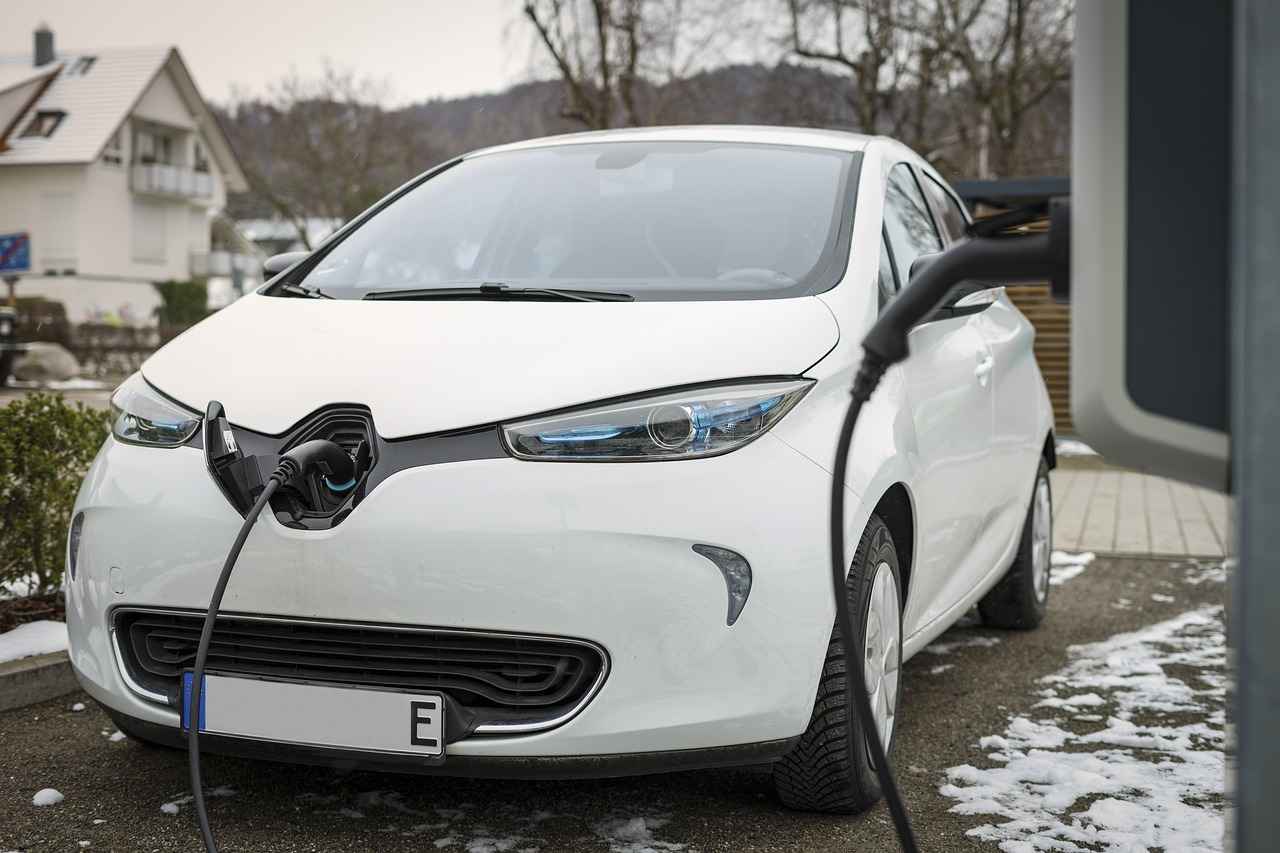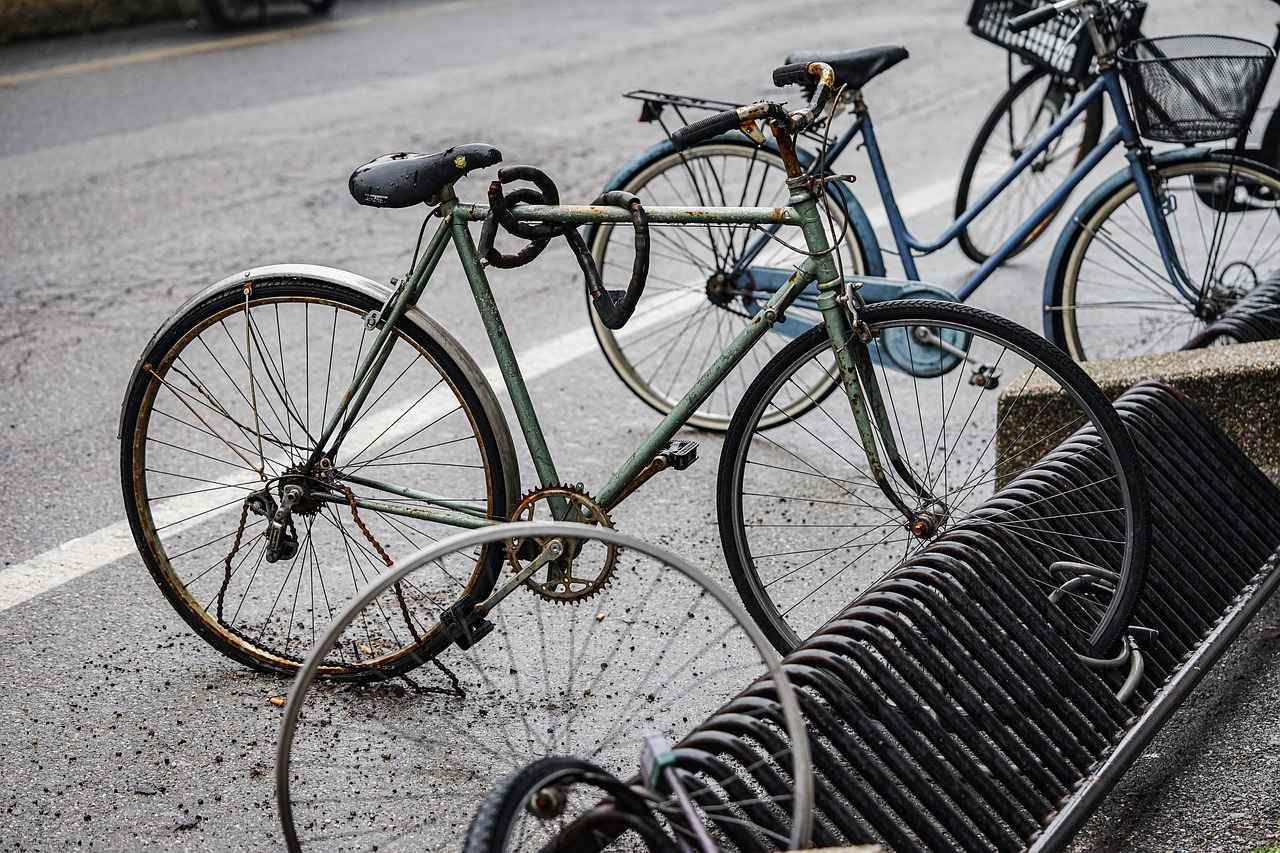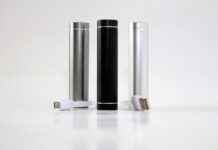This article provides essential tips and insights on maintaining your electric bike, ensuring optimal performance and longevity while enhancing your riding experience. Proper maintenance not only boosts the bike’s efficiency but also contributes to a safer and more enjoyable ride.
Understanding Electric Bike Components
Familiarizing yourself with the main components of an electric bike is crucial for effective maintenance. Key parts include the battery, motor, tires, and brakes. By understanding these components, you can identify potential issues before they escalate.
Regular Battery Care
Proper battery maintenance is vital for maximizing your electric bike’s range and lifespan. Learn how to charge, store, and care for your battery effectively:
- Charging Best Practices: Avoid overcharging your battery. Aim to charge it when it drops to around 20% capacity.
- Storage Conditions: Store your battery in a cool, dry place to prevent degradation.
- Battery Replacement Signs: Watch for decreased range or longer charging times as indicators for replacement.
Maintaining the Electric Motor
The electric motor is the heart of your e-bike. Regular checks can help keep it running smoothly:
- Cleaning the Motor: Regularly wipe down the motor to remove dirt and debris.
- Motor Performance Issues: Listen for unusual noises and feel for vibrations to identify potential problems early.
Tire Maintenance for Safety and Efficiency
Tire care is crucial for safety. Regularly check tire pressure and tread:
- Checking Tire Pressure: Inflate tires to the recommended PSI for optimal performance.
- Inspecting Tire Tread: Ensure adequate tread depth to maintain grip and safety.
Brakes and Safety Features
Ensure your brakes are in good condition:
- Brake Inspection Techniques: Regularly check for wear and tear on brake pads.
- Adjusting Brake Settings: Fine-tune brakes for better responsiveness.
Cleaning and Lubrication
Regular cleaning and lubrication can prevent wear:
- Choosing the Right Cleaning Products: Use bike-specific cleaners to avoid damage.
- Lubrication Techniques: Apply lubricant to chains and moving parts to ensure smooth operation.
Storing Your Electric Bike
Proper storage is crucial for maintaining your bike’s condition:
- Indoor Storage Tips: Keep your bike in a dry, protected area.
- Outdoor Storage Solutions: Use a weatherproof cover to protect against elements.
Conclusion: The Importance of Regular Maintenance
Regular maintenance is essential for extending the lifespan of your electric bike. By following these tips, you can enjoy a reliable and efficient riding experience for years to come.

Understanding Electric Bike Components
Understanding the various components of an electric bike is essential for any owner. This knowledge not only aids in effective maintenance but also empowers riders to identify potential issues before they escalate into serious problems. With the right information, you can ensure your electric bike operates at peak performance, providing you with a safe and enjoyable riding experience.
Electric bikes are comprised of several key components, each playing a vital role in their overall functionality. Here are the main components you should familiarize yourself with:
- Battery: The power source of your electric bike, batteries come in various types and capacities. Regularly checking the battery’s health and charge level is crucial for optimal performance.
- Motor: This is the heart of the e-bike, providing the necessary power to propel the bike forward. Understanding how to maintain and troubleshoot motor issues is essential for smooth rides.
- Controller: The controller regulates the power from the battery to the motor. Knowing how to inspect and maintain the controller can prevent electrical issues.
- Brakes: Essential for safety, your bike’s braking system needs regular checks to ensure they function correctly, especially under different conditions.
- Tires: Proper tire maintenance is crucial for safety and efficiency. Regularly checking tire pressure and tread depth can enhance your riding experience.
By understanding these components, you can perform regular checks and maintenance, which will significantly extend the lifespan of your electric bike. Additionally, being knowledgeable about your bike’s parts allows you to address minor issues before they become major repairs, saving you both time and money.
In conclusion, becoming familiar with the main components of your electric bike is a proactive step towards effective maintenance. This knowledge not only enhances your riding experience but also ensures that your bike remains reliable and efficient for years to come.

Regular Battery Care
is essential for enhancing the performance and lifespan of your electric bike. Proper maintenance ensures that you get the most out of your battery, allowing for longer rides and a more enjoyable experience. Below are some crucial aspects of battery care that every electric bike owner should know.
To maintain your battery’s health, it is important to follow best practices for charging. Here are some tips:
- Avoid Overcharging: Disconnect your battery once it reaches full charge to prevent damage.
- Use the Right Charger: Always use the manufacturer-recommended charger to ensure compatibility and safety.
- Charge Regularly: Aim to keep your battery between 20% and 80% charged for optimal performance.
Understanding when to charge your battery can significantly impact its longevity. Try to charge your battery during cooler parts of the day, as high temperatures can lead to faster degradation. Night charging is often ideal, but ensure the battery is not left plugged in for extended periods after reaching full charge.
When not in use, the way you store your battery can affect its condition. Follow these guidelines:
- Ideal Temperature: Store your battery in a cool, dry place, ideally between 32°F and 68°F (0°C to 20°C).
- Humidity Control: Avoid storing in damp areas to prevent corrosion and other damage.
- Regular Checks: Periodically check the battery’s charge level and condition to ensure it remains in good shape.
Being able to recognize when your battery needs replacing can save you from unexpected failures. Look out for the following signs:
- Decreased Range: If you notice a significant drop in how far you can ride on a single charge, it may be time for a new battery.
- Swelling or Damage: Physical damage or swelling is a clear indicator that your battery needs replacing.
- Frequent Charging: If your battery requires frequent charging, it may be losing its ability to hold a charge.
By following these battery care tips, you can ensure that your electric bike remains reliable and efficient, allowing for countless enjoyable rides.
Charging Best Practices
Charging your electric bike’s battery is a crucial aspect of ensuring its longevity and performance. By adhering to best practices, you can significantly enhance the lifespan of your battery, allowing for longer and more enjoyable rides. Below are some effective strategies for optimal battery charging.
- Use the Right Charger: Always use the charger that came with your electric bike. Using an incompatible charger can lead to battery damage.
- Avoid Overcharging: Disconnect the charger once the battery is fully charged. Overcharging can degrade battery health over time.
- Charge Regularly: It’s best to charge your battery regularly, ideally when it drops to around 20-30%. This practice helps maintain optimal battery health.
- Temperature Awareness: Charge your battery in a temperature-controlled environment. Extreme heat or cold can impact charging efficiency and battery life.
- Store with Care: If you plan to store your bike for an extended period, charge the battery to about 50% before storage. This level helps prevent deep discharge, which can harm the battery.
By following these , you can avoid potential damage to your electric bike’s battery and ensure that it remains functional for longer. This not only saves you time and money but also enhances your overall riding experience by minimizing interruptions due to battery issues.
In conclusion, understanding and implementing proper charging techniques is essential for every electric bike owner. By prioritizing battery care, you can enjoy the freedom of longer rides without the worry of running out of power.
Optimal Charging Times
are crucial for maintaining the health and longevity of your electric bike’s battery. Understanding the best times to charge can significantly enhance your riding experience and extend the lifespan of your battery.
Charging your electric bike battery at the right times can prevent issues such as overcharging, which can lead to reduced battery capacity and efficiency over time. Here are some key points to consider:
- Charge After Short Rides: If you’ve taken a short ride, it’s advisable to charge your battery promptly. This practice helps maintain a consistent charge cycle.
- Avoid Deep Discharge: Try not to let your battery drop below 20% before recharging. Frequent deep discharges can harm the battery’s overall health.
- Charge During Cool Hours: Charging your battery during cooler parts of the day, such as early morning or late evening, can help maintain optimal battery temperature, enhancing charging efficiency.
- Use Smart Chargers: If available, utilize smart chargers that can automatically stop charging when the battery reaches full capacity, preventing overcharging.
- Regular Maintenance: Regularly check your battery’s health and performance. If you notice any issues, adjust your charging routine accordingly.
By following these charging best practices, you can ensure that your electric bike’s battery remains in excellent condition, allowing for longer rides and better performance. Remember, a well-maintained battery is key to enjoying your electric bike to the fullest.
In conclusion, understanding is essential for electric bike owners. By avoiding overcharging and adhering to the best practices outlined above, you can significantly enhance the lifespan and efficiency of your battery, ensuring many enjoyable rides ahead.
Storage Conditions
are crucial for maintaining the health and longevity of your electric bike’s battery. Proper storage can significantly reduce the risk of battery degradation, ensuring that your bike remains reliable and efficient for years to come.
When it comes to battery storage, the ideal temperature is between 20°C and 25°C (68°F to 77°F). Storing your battery outside this range can lead to reduced capacity and faster aging. For instance, temperatures above 30°C (86°F) can accelerate chemical reactions within the battery, leading to potential damage. Conversely, temperatures below 0°C (32°F) can cause the battery to freeze, which may result in permanent capacity loss.
In addition to temperature, humidity levels also play a vital role in battery preservation. The optimal relative humidity for battery storage is between 40% and 60%. High humidity can lead to condensation, which may cause corrosion and other electrical issues. On the other hand, low humidity can increase the risk of static electricity, potentially damaging the battery’s internal components.
Here are some practical tips for storing your electric bike battery:
- Store in a cool, dry place: Choose a location that maintains a stable temperature and humidity level.
- Avoid direct sunlight: Exposure to sunlight can raise the temperature of the battery, leading to degradation.
- Keep the battery charged: Store your battery with a charge level between 40% and 60% to maintain optimal health.
- Regularly check the battery: Inspect your battery periodically for any signs of damage or wear.
By following these guidelines, you can ensure that your electric bike’s battery remains in peak condition, allowing for an enjoyable and uninterrupted riding experience.
Battery Replacement Signs
Recognizing the signs that your electric bike’s battery may need replacement is crucial for ensuring a smooth and reliable riding experience. A well-maintained battery not only enhances performance but also extends the lifespan of your bike. Here are some key indicators that your battery might be nearing the end of its life:
- Decreased Range: If you notice that your bike’s range has significantly decreased, it may indicate that the battery is losing its ability to hold a charge. This can limit your rides and lead to unexpected failures.
- Longer Charging Times: If your battery takes much longer to charge than it used to, this could suggest that it is not functioning efficiently and might need replacement.
- Swelling or Damage: Physical signs such as swelling, cracks, or leaks in the battery casing are clear indicators that it is time for a replacement. Continuing to use a damaged battery can be dangerous.
- Inconsistent Power Delivery: If you experience sudden drops in power while riding, it could signal that the battery is failing to provide consistent energy to the motor.
- Frequent Error Messages: Many electric bikes have built-in diagnostics that may display error messages related to battery performance. Pay attention to these alerts as they can indicate underlying issues.
Being proactive about battery maintenance can save you from unexpected breakdowns and ensure your bike remains reliable. Regularly check your battery’s health and consult your manufacturer’s guidelines for optimal care practices.
In conclusion, staying vigilant about the signs of battery wear and tear is essential for any electric bike owner. By recognizing these indicators early, you can take the necessary steps to replace your battery and maintain your bike’s performance.

Maintaining the Electric Motor
The electric motor is the heart of your e-bike, playing a crucial role in its overall performance. Regular checks and maintenance are essential to ensure that it runs smoothly and efficiently, allowing you to enjoy a seamless riding experience. Here are some key aspects to consider for maintaining your electric motor:
- Regular Inspections: Schedule routine inspections to check for any visible signs of wear or damage. Look for loose connections, unusual noises, or overheating, which can indicate underlying issues.
- Cleaning the Motor: Keeping the motor clean is vital for optimal performance. Use a soft brush or compressed air to remove dust and debris. Ensure that no water enters the motor housing during cleaning, as this can cause serious damage.
- Lubrication: Some motors may require periodic lubrication. Consult your manufacturer’s guidelines to determine the best type of lubricant and the appropriate intervals for application.
- Monitoring Performance: Pay attention to how your e-bike performs during rides. If you notice a decrease in power or responsiveness, it may be time to have the motor checked by a professional.
Common Motor Issues
Identifying common performance issues related to the motor can help you troubleshoot problems early. Some signs to watch for include:
- Reduced Speed: If your e-bike struggles to reach its usual speed, it might indicate motor fatigue or electrical issues.
- Increased Noise: Unusual sounds from the motor can suggest mechanical problems that need immediate attention.
- Overheating: If the motor becomes excessively hot during operation, it may be working harder than it should, which can lead to failure.
By following these maintenance tips, you can ensure that the electric motor of your e-bike remains in peak condition, enhancing both its lifespan and your overall riding experience.
Cleaning the Motor
Keeping your electric bike’s motor clean is essential for ensuring optimal performance and longevity. A clean motor not only enhances efficiency but also prevents potential issues that could arise from dirt and debris accumulation. In this section, we will explore the best methods to clean and maintain your electric bike’s motor safely.
- Gather the Right Tools: Before starting, ensure you have the necessary tools and materials. You will need a soft brush, a microfiber cloth, mild detergent, and water. Avoid using harsh chemicals that could damage the motor.
- Disconnect the Battery: For safety reasons, always disconnect the battery before cleaning. This prevents any electrical issues and ensures you can work without any risk.
- Brush Off Dirt and Debris: Use a soft brush to gently remove any loose dirt or debris from the motor’s exterior. Pay attention to crevices where grime can accumulate.
- Wipe with a Damp Cloth: Dampen a microfiber cloth with a mixture of mild detergent and water. Carefully wipe down the motor, avoiding any openings to prevent moisture from entering.
- Dry Thoroughly: After cleaning, ensure the motor is completely dry before reconnecting the battery. This helps prevent rust and other moisture-related issues.
- Regular Maintenance: Establish a regular cleaning schedule based on your riding conditions. If you frequently ride in muddy or wet environments, consider cleaning the motor more often.
By following these steps, you can maintain your electric bike’s motor effectively, ensuring it runs smoothly and efficiently. Regular cleaning not only enhances performance but also extends the lifespan of your bike, allowing you to enjoy many more rides.
Motor Performance Issues
are a critical aspect of maintaining the efficiency and longevity of your electric bike. Understanding these issues can empower you to take proactive measures, ensuring that your bike remains in optimal condition for your rides.
Electric bike motors can experience various performance issues that, if left unaddressed, may lead to significant complications. By identifying these issues early, you can avoid costly repairs and ensure a smoother riding experience. Here are some common motor performance problems to watch for:
- Unusual Noises: If you hear grinding, clicking, or other unusual sounds emanating from the motor, it may indicate mechanical issues that require immediate attention.
- Reduced Power Output: A noticeable decrease in power or responsiveness while pedaling can signal a problem with the motor or its connection to the battery.
- Overheating: If the motor becomes excessively hot during operation, it could lead to permanent damage. Ensure proper ventilation and avoid prolonged use at high power settings.
- Intermittent Functionality: If the motor cuts in and out during rides, it may be due to loose connections, a failing controller, or battery issues.
- Battery Drain: Excessive battery consumption can be a sign of motor inefficiency. Regularly check the motor’s performance to ensure it operates within expected parameters.
Maintenance Tips: To prevent these issues, regular maintenance is essential. Clean the motor regularly, check connections, and ensure that the bike’s software is up to date. Furthermore, consult your bike’s manual for specific care instructions tailored to your motor type.
By being vigilant and addressing promptly, you can enjoy your electric bike to its fullest, ensuring safe and enjoyable rides for years to come.

Tire Maintenance for Safety and Efficiency
Tire maintenance is an essential aspect of ensuring both safety and performance for your electric bike. Neglecting tire care can lead to compromised handling, increased wear, and even accidents. Regular checks not only enhance your riding experience but also extend the lifespan of your tires.
Importance of Tire Pressure
Maintaining the correct tire pressure is vital for optimal performance. Under-inflated tires can cause increased rolling resistance, leading to reduced battery efficiency and a less enjoyable ride. Conversely, over-inflated tires may lead to a harsher ride and decreased traction. To maintain safety:
- Check tire pressure at least once a month.
- Use a reliable pressure gauge to ensure accuracy.
- Refer to your bike’s manual for the recommended pressure range.
Inspecting Tire Tread
The tread on your tires plays a crucial role in providing grip and stability on various surfaces. Regularly inspecting the tread can help you identify wear patterns and potential issues early on. Here’s how to effectively inspect your tire tread:
- Look for uneven wear, which may indicate alignment issues.
- Check for cracks, bulges, or punctures that could compromise safety.
- Use the penny test: Insert a penny into the tread; if you can see the top of Lincoln’s head, it’s time for new tires.
Routine Maintenance Tips
In addition to checking tire pressure and tread, consider these routine maintenance tips:
- Rotate your tires regularly to ensure even wear.
- Clean your tires to remove debris and prevent damage.
- Store your bike in a cool, dry place to prevent rubber degradation.
Conclusion
By prioritizing tire maintenance, you not only enhance your riding experience but also ensure your safety on the road. Regular checks and proactive care can prevent accidents and extend the life of your tires, making every ride enjoyable and efficient.
Checking Tire Pressure
Maintaining the correct tire pressure is not just a matter of convenience; it is vital for safety and efficiency while riding your electric bike. Proper tire pressure ensures optimal contact with the road, enhancing traction and stability, which is essential for a smooth and safe ride.
To begin, it is important to understand how to check and adjust tire pressure correctly. Here is a step-by-step guide:
- Gather Necessary Tools: You will need a reliable tire pressure gauge and an air pump. Some pumps come with built-in gauges for convenience.
- Know the Recommended Pressure: Check your bike’s manual or the tire sidewall for the recommended pressure, usually measured in PSI (pounds per square inch).
- Check the Pressure: Remove the valve cap from the tire and press the tire pressure gauge onto the valve stem. The gauge will provide a reading of the current tire pressure.
- Adjust as Necessary: If the pressure is below the recommended level, use the air pump to inflate the tire. If it is too high, release some air until it reaches the desired level.
- Recheck the Pressure: After adjusting, check the pressure again to ensure it is within the recommended range.
- Replace the Valve Cap: Once you have confirmed the correct pressure, replace the valve cap to keep dirt and debris out.
It is advisable to check your tire pressure at least once a month and before long rides. Fluctuations in temperature can affect tire pressure, so keeping an eye on it can prevent potential issues.
In conclusion, regularly checking and adjusting your tire pressure is a simple yet crucial aspect of electric bike maintenance. By ensuring your tires are properly inflated, you not only enhance your safety but also improve the overall efficiency of your ride, leading to a more enjoyable experience.
Inspecting Tire Tread
is an essential aspect of maintaining your electric bike. Regular inspections can significantly enhance your safety and overall riding experience. Tires are the only contact point between your bike and the road, making their condition critical for optimal performance.
The tread on your tires plays a vital role in providing grip and traction, especially on various surfaces such as wet roads, gravel, or uneven terrain. By ensuring that your tire tread is in good condition, you can prevent accidents and ensure a smoother ride.
Here are some key points to consider when inspecting your tire tread:
- Visual Inspection: Look for any signs of wear, such as cracks, bulges, or uneven tread patterns. If you notice any of these issues, it may be time to replace your tires.
- Tread Depth: Use a tread depth gauge or the penny test to measure the depth of your tire tread. A depth of at least 1/16 inch is generally recommended for safe riding.
- Check for Foreign Objects: Inspect your tires for any embedded objects like stones or nails that could lead to punctures. Removing these promptly can help prevent potential tire damage.
- Pressure Check: Ensure that your tires are inflated to the recommended pressure. Proper inflation is crucial for maintaining tread integrity and performance.
By regularly inspecting your tire tread, you not only enhance your safety but also improve your bike’s efficiency. Well-maintained tires can lead to better fuel efficiency and a more enjoyable riding experience.
In conclusion, make tire tread inspection a routine part of your electric bike maintenance. This simple practice can prevent accidents, extend the lifespan of your tires, and ultimately enhance your overall riding experience.

Brakes and Safety Features
Ensuring your brakes and safety features are in good condition is essential for safe riding. Regular checks can prevent accidents and enhance confidence on the road. The importance of maintaining your brakes cannot be overstated, as they are a critical component of your electric bike’s safety system.
Here are some key practices to ensure your brakes are always in top condition:
- Regular Brake Inspections: Conduct thorough inspections of your brakes at least once a month. Look for signs of wear, such as worn brake pads or leaking hydraulic fluid in disc brakes.
- Adjusting Brake Settings: Knowing how to adjust your brake settings can significantly improve responsiveness. Ensure that your brake levers engage at the right distance, providing you with better control.
- Cleaning Brake Components: Dirt and debris can accumulate on brake pads and rotors, affecting performance. Regularly clean these components using appropriate cleaning solutions to maintain optimal functionality.
- Brake Fluid Maintenance: For hydraulic brakes, check the brake fluid level and replace it as needed. Old or contaminated brake fluid can lead to diminished braking performance.
Additionally, consider the following safety features that complement your braking system:
- Reflectors and Lights: Ensure that your bike is equipped with reflectors and lights to enhance visibility, especially during night rides.
- Bell or Horn: Having a bell or horn can alert pedestrians and other cyclists of your presence, contributing to overall safety.
- Helmet Usage: Always wear a helmet while riding. It’s a simple yet effective way to protect yourself in case of an accident.
By prioritizing the maintenance of your brakes and safety features, you not only enhance your own safety but also contribute to a safer riding environment for everyone. Regular checks and adjustments can prevent potential issues and ensure that your rides are enjoyable and secure.
Brake Inspection Techniques
are essential for maintaining the safety and performance of your electric bike. Regular inspections not only ensure that your brakes function effectively but also help you identify any signs of wear and tear that could compromise your riding experience. In this section, we will explore the best practices for inspecting your brakes, enabling you to ride with confidence.
To start, it is crucial to understand the primary components of your brake system. Electric bikes typically feature either disc brakes or rim brakes. Each type requires slightly different inspection techniques:
- Disc Brakes: Check the brake pads for wear. If the pads are less than 1mm thick, it’s time for a replacement. Additionally, inspect the rotor for any warping or damage.
- Rim Brakes: Look for wear on the brake pads and ensure they make proper contact with the rim. If the pads are worn down to the indicator line, replace them immediately.
Next, ensure that your brake cables are in good condition. Look for fraying or corrosion, which can significantly affect braking performance. If you notice any issues, consider replacing the cables to maintain optimal functionality.
Another important aspect of brake inspection is checking the brake lever response. Squeeze the levers to ensure they feel firm and responsive. If they feel spongy or require excessive force, it may indicate air in the hydraulic system or a need for adjustment.
Regularly inspecting your brakes not only enhances your safety but also prolongs the lifespan of your bike’s braking components. By being diligent in these checks, you can prevent more significant issues from arising and ensure that your brakes are always ready when you need them most.
In conclusion, mastering these is a vital part of electric bike maintenance. By staying proactive and addressing any issues promptly, you can enjoy a safer and more reliable riding experience.
Adjusting Brake Settings
is a crucial aspect of maintaining your electric bike, significantly impacting both safety and performance. Properly adjusted brakes enhance responsiveness, allowing for smoother stops and greater control during rides. This not only makes your rides more enjoyable but also increases safety, especially in challenging conditions.
When it comes to electric bikes, the braking system is vital. It is essential to understand how to adjust your brake settings effectively. Here are some important considerations:
- Brake Type: Identify whether your bike uses disc or rim brakes, as the adjustment methods differ.
- Brake Pads: Regularly check the wear on your brake pads. Worn pads can reduce braking efficiency and should be replaced promptly.
- Brake Cable Tension: Adjusting the tension of the brake cables can significantly improve responsiveness. Ensure there is minimal slack in the cables for optimal performance.
- Alignment: Ensure that the brake pads are correctly aligned with the rims or rotors. Misalignment can lead to uneven wear and reduced braking power.
To adjust your brakes, follow these steps:
- Check the brake lever’s feel. If it pulls too close to the handlebars, it may need adjustment.
- Locate the adjustment screws on the brake calipers or levers, depending on your brake type.
- Turn the screws to increase or decrease tension as needed.
- Test the brakes after adjustments to ensure they engage smoothly and effectively.
In conclusion, understanding how to adjust your brake settings is essential for enhancing both responsiveness and safety on your electric bike. Regular checks and adjustments can lead to a more enjoyable and secure riding experience, allowing you to ride with confidence.

Cleaning and Lubrication
are essential practices for maintaining your electric bike in top condition. Regular upkeep not only enhances performance but also extends the lifespan of your bike’s components. This section will cover the best methods for cleaning and lubricating your electric bike, ensuring it remains efficient and reliable.
Keeping your electric bike clean is crucial for several reasons:
- Prevents Rust and Corrosion: Dirt and grime can lead to rust on metal parts, which can compromise functionality.
- Enhances Aesthetics: A clean bike not only looks better but also reflects care and maintenance.
- Improves Performance: Regular cleaning can help maintain optimal performance by ensuring that all components function smoothly.
Here are some effective cleaning practices for your electric bike:
- Use Mild Detergents: Opt for gentle, non-corrosive cleaning solutions to avoid damaging the bike’s finish.
- Soft Brushes and Cloths: Use soft brushes and microfiber cloths to clean delicate areas without scratching surfaces.
- Water Caution: Avoid soaking electrical components; instead, use a damp cloth for cleaning sensitive areas.
Proper lubrication is key to ensuring smooth operation of your bike’s moving parts. Here’s how to effectively lubricate:
- Identify Lubrication Points: Focus on the chain, derailleurs, and brake cables where friction occurs.
- Choose the Right Lubricant: Use bike-specific lubricants that are designed for the conditions you ride in (wet or dry).
- Apply Sparingly: Apply lubricant in small amounts and wipe off any excess to prevent dirt accumulation.
It’s recommended to clean and lubricate your electric bike at least once a month. However, if you ride frequently or in adverse conditions, increase the frequency to maintain optimal performance.
In conclusion, regular cleaning and lubrication are vital to ensuring your electric bike operates smoothly and lasts longer. By incorporating these practices into your maintenance routine, you can enjoy a reliable and efficient riding experience.
Choosing the Right Cleaning Products
is crucial for maintaining the aesthetics and performance of your electric bike. Using the appropriate products not only ensures that your bike looks great but also helps in preserving its functionality over time. This section will guide you through selecting safe and effective cleaning products specifically designed for electric bikes.
When it comes to cleaning your electric bike, it’s essential to avoid harsh chemicals that can damage sensitive components. Here are some recommended types of cleaning products:
- Eco-friendly Cleaners: Look for biodegradable and non-toxic cleaners that are safe for both your bike and the environment.
- Bike-Specific Solutions: Many manufacturers offer cleaning products formulated specifically for bicycles. These are designed to effectively remove dirt and grime without harming the bike’s finish or components.
- Degreasers: For areas with heavy grease buildup, such as the chain and gears, a bike-safe degreaser can be very effective. Ensure it is safe for use on electric bikes.
- Soft Brushes and Cloths: Use soft-bristled brushes and microfiber cloths to avoid scratching the bike’s surface while cleaning.
Before applying any cleaning product, it’s advisable to test it on a small area first to ensure compatibility with your bike’s materials. Additionally, always follow the manufacturer’s instructions for the best results.
In conclusion, selecting the right cleaning products is essential for maintaining your electric bike’s performance and appearance. By using safe, effective products, you can ensure that your bike remains in excellent condition, ready for your next ride.
Lubrication Techniques
Proper lubrication is a crucial aspect of maintaining your electric bike, as it can significantly enhance the performance and prolong the lifespan of its moving parts. Understanding the best techniques and products for effective lubrication will ensure that your bike operates smoothly and efficiently.
- Identify Key Moving Parts: Start by identifying the key moving parts of your electric bike that require lubrication. These typically include the chain, gears, derailleurs, and pivot points on brakes and suspension.
- Choose the Right Lubricant: Selecting a high-quality lubricant specifically designed for bicycles is essential. Look for products that are water-resistant and suitable for various weather conditions. Teflon-based lubricants are popular for their durability and effectiveness.
- Clean Before Lubrication: Always clean the moving parts before applying lubricant. Use a degreaser to remove dirt and grime, ensuring that the lubricant adheres properly and functions effectively.
- Apply Sparingly: When applying lubricant, use it sparingly. Too much lubricant can attract dirt and debris, leading to more wear and tear. A few drops on the chain and other moving parts are usually sufficient.
- Wipe Off Excess: After applying the lubricant, wipe off any excess with a clean cloth. This helps prevent buildup and keeps your bike clean.
- Regular Maintenance Schedule: Establish a regular maintenance schedule for lubrication. Depending on your riding frequency and conditions, lubricating your bike every few weeks or after wet rides is advisable.
By following these lubrication techniques, you can enhance the performance of your electric bike while ensuring its longevity. Regular maintenance not only improves the riding experience but also helps avoid costly repairs in the future.

Storing Your Electric Bike
Proper storage of your electric bike is crucial for maintaining its condition and performance. Whether you are keeping it indoors or outdoors, following best practices can significantly extend the lifespan of your bike.
Indoor Storage Tips
- Choose a Dry Location: Select a spot that is dry and well-ventilated to prevent moisture buildup, which can cause rust and damage to electrical components.
- Use a Bike Cover: If possible, use a protective cover to shield your bike from dust and potential scratches.
- Elevate the Bike: Consider using a bike rack or stand to keep it off the ground, which can help avoid damage to the tires and frame.
- Disconnect the Battery: For prolonged storage, disconnect the battery to prevent any drain and protect it from potential damage.
Outdoor Storage Solutions
- Invest in a Quality Lock: Use a high-quality lock to secure your bike, as theft is a common concern for outdoor storage.
- Weather Protection: If you must store your bike outdoors, invest in a waterproof cover to protect it from rain, snow, and UV rays.
- Find a Shaded Area: Whenever possible, park your bike in a shaded area to minimize exposure to harsh sunlight, which can deteriorate the battery and frame.
- Regular Checks: Periodically check your bike for any signs of wear or damage, especially after severe weather conditions.
By following these storage tips, you can ensure that your electric bike remains in top condition, ready for your next adventure. Proper storage not only protects your investment but also enhances your overall riding experience.
Indoor Storage Tips
Storing your electric bike indoors is one of the best ways to ensure its longevity and performance. By protecting it from harsh weather conditions, you can prevent rust, corrosion, and other forms of damage that can significantly affect its functionality. Below are some best practices for indoor storage to keep your electric bike in top condition.
- Choose the Right Location: Select a dry, cool, and well-ventilated area for storage. Avoid damp basements or areas with high humidity, as these conditions can lead to rust and battery degradation.
- Clean Before Storing: Always clean your bike thoroughly before storing it. Remove dirt, mud, and grime to prevent buildup that can cause long-term damage. Use a gentle cleanser and a soft cloth to avoid scratching the surface.
- Battery Care: If possible, remove the battery and store it separately. Ensure the battery is charged to about 50% before storage, as this is the optimal charge level for long-term storage.
- Use a Bike Cover: Even when stored indoors, using a breathable bike cover can protect your bike from dust and accidental scratches. Choose a cover that allows air circulation to avoid moisture accumulation.
- Positioning: Store your bike upright or on a bike stand to avoid any stress on the tires and frame. If you have limited space, consider hanging your bike on a wall rack.
- Regular Checks: Periodically check your bike while in storage. Look for any signs of damage, check tire pressure, and ensure that the battery is still in good condition.
By following these , you can significantly enhance the lifespan and performance of your electric bike. Proper care and storage will not only keep your bike looking great but also ensure that it is ready for your next adventure.
Outdoor Storage Solutions
are essential for protecting your electric bike from various environmental factors and potential theft. If you find yourself in a situation where indoor storage isn’t feasible, it’s crucial to implement effective strategies to ensure the longevity and reliability of your bike.
The first step in outdoor storage is to find a secure location. Look for areas that are well-lit and have a low crime rate. If possible, consider investing in a bike shed or a sturdy bike cover that can shield your bike from rain, snow, and UV rays. A quality cover not only protects against weather damage but also deters thieves by obscuring the bike from view.
Another important aspect is to use high-quality locks. A robust lock system, such as a U-lock combined with a chain lock, can significantly reduce the risk of theft. Always lock your bike to a fixed object, ensuring that both the frame and wheels are secured. Additionally, consider using a GPS tracking device for extra security. This can help you locate your bike if it’s stolen.
To further protect your bike, regularly check the tires and brakes for any wear and tear, especially if it has been exposed to the elements. Keeping your bike clean and lubricated will also help prevent rust and corrosion.
Finally, consider using anti-theft alarms or locking systems that emit a loud sound when tampered with. This can act as a deterrent and alert you or passersby if someone attempts to steal your bike.
In conclusion, while outdoor storage may pose challenges, implementing these protective measures can significantly enhance your electric bike’s safety and durability, ensuring it remains a reliable mode of transportation for years to come.

Conclusion: The Importance of Regular Maintenance
Maintaining your electric bike is not just about keeping it clean; it is a crucial aspect of ensuring its longevity and optimal performance. Regular maintenance can significantly extend the lifespan of your e-bike, allowing you to enjoy countless rides without unexpected issues. By adopting a proactive approach to maintenance, you can enhance your riding experience and avoid costly repairs down the line.
Here are some key practices to keep your electric bike in top condition:
- Routine Inspections: Regularly check the main components of your bike, such as the battery, motor, tires, and brakes. Early detection of any issues can prevent them from escalating.
- Battery Care: Properly charging and storing your battery is essential. Aim to charge your battery at optimal times and avoid letting it discharge completely.
- Motor Maintenance: Keep the motor clean and free from debris. This will help maintain its efficiency and prevent performance issues.
- Tire Checks: Regularly inspect your tire pressure and tread. This not only enhances safety but also improves the overall riding experience.
- Brake Functionality: Ensure that your brakes are functioning correctly. Regular brake inspections can prevent accidents and improve safety.
- Cleaning and Lubrication: Clean your bike regularly and apply lubricant to moving parts to ensure smooth operation and prevent wear and tear.
- Proper Storage: Store your bike in a safe environment to protect it from weather conditions and potential theft. Indoor storage is ideal, but if outdoor storage is necessary, use protective covers.
By following these maintenance tips, you can not only extend the lifespan of your electric bike but also enhance your overall riding experience. A well-maintained e-bike is a reliable companion for your adventures, ensuring that you can enjoy the freedom of the open road for years to come.
Frequently Asked Questions
- How often should I charge my electric bike’s battery?
It’s best to charge your electric bike’s battery after every ride, especially if you’ve used a significant portion of its range. This ensures the battery remains healthy and ready for your next adventure!
- What are the signs that my battery needs replacement?
If you notice a significant drop in range, the battery takes longer to charge, or it won’t hold a charge at all, these could be signs that it’s time for a replacement. Keep an eye on these indicators to avoid being caught off guard!
- How do I maintain my electric bike’s motor?
Regularly clean the motor to remove dirt and debris, and check for any unusual noises or performance issues. A little attention goes a long way in keeping your motor running smoothly!
- What tire pressure should I maintain for safety?
Check your bike’s manual for the recommended tire pressure, but generally, it should be between 30 to 50 PSI. Maintaining the correct pressure enhances safety and ensures a smooth ride.
- How can I store my electric bike properly?
If possible, store your bike indoors to protect it from the elements. If outdoor storage is necessary, invest in a good quality cover and lock to safeguard against weather and theft.














